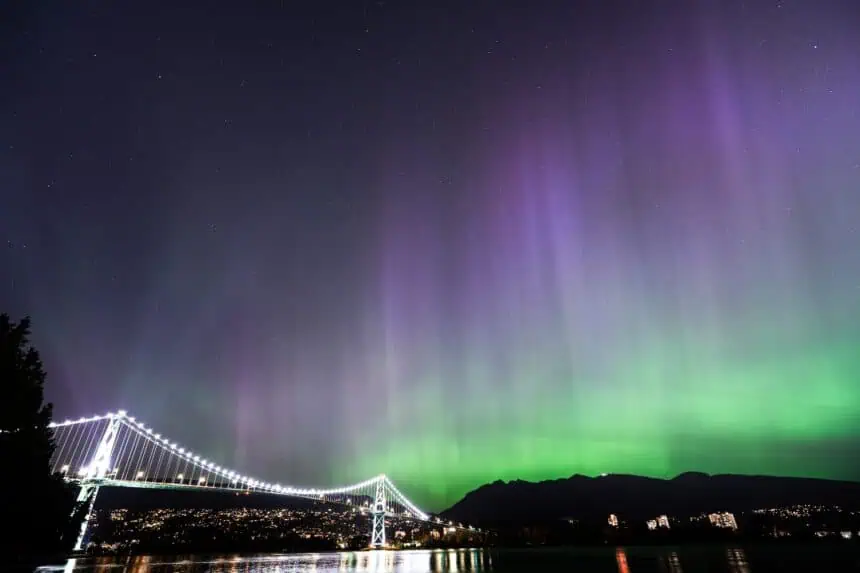Geomagnetic activity continues over North America
Despite a decline in solar storm intensity, the United States is still experiencing the aftereffects of two major coronal mass ejections (CMEs) that struck Earth in the early hours of June 1 and late June 2. These intense solar events have continued to disturb the planet’s magnetic field, creating ideal conditions for the aurora borealis.
Forecasts from both the U.K. Met Office and the NOAA Space Weather Prediction Center suggest that there is a low but persistent chance of strong G3-class geomagnetic storms, with moderate (G2) and minor (G1) activity more likely throughout June 6. The Kp index, which measures geomagnetic activity on a scale from 0 to 9, is expected to reach 4.67 over the next 24 hours—just under the threshold typically associated with widespread auroral visibility.
Where the northern lights may appear tonight
If G3 conditions materialize once again, the auroral oval may expand far enough south for the northern lights to be visible in regions unaccustomed to such displays. The latest aurora map from NOAA shows the potential for auroras reaching as far south as Illinois and Oregon, though this depends on whether geomagnetic activity spikes again.
Thirteen U.S. states are currently positioned either fully or partially above the NOAA’s projected auroral visibility line for tonight. These are listed below, ordered from most likely to least likely to experience auroral activity:
Alaska, Minnesota, North Dakota, Montana, Wisconsin, Michigan (Upper Peninsula), South Dakota, Maine, Vermont, New Hampshire, Idaho, Washington, and Oregon.
While these states have a higher chance, the northern lights are notoriously unpredictable. Visibility can extend beyond forecasted areas depending on cloud cover, light pollution, and the intensity of solar wind streams hitting the magnetic field at any given moment.
When and how to look for auroras
For those in the target areas, the best viewing window will begin around 1 a.m. local time, when the night sky is darkest. Seek out a north-facing location, far from urban lighting. The summer season limits true darkness, especially in northern states, making timing and location critical.
Modern smartphone cameras can often detect auroral light before it becomes visible to the naked eye, so try pointing your device at the sky for early hints of activity. Stay alert—auroras can suddenly appear in unexpected parts of the sky, including behind or directly overhead.
If you want to stay informed, apps like “My Aurora Forecast & Alerts” and “Space Weather Live” can provide location-based aurora predictions and live data on geomagnetic conditions. These tools are helpful in determining whether tonight’s atmospheric dynamics will produce another round of spectacular celestial displays across the northern United States.










